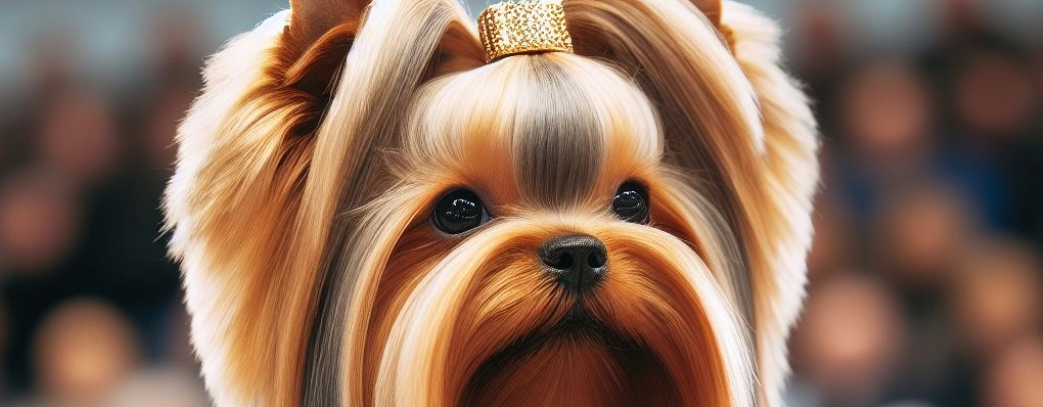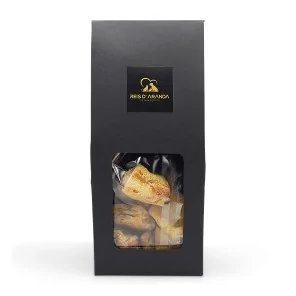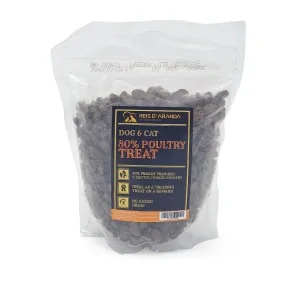The Tornjak originated from genetically homogeneous, almost extinct, indigenous shepherd dogs. These dogs have...
THE YORKSHIRE TERRIER
THE HISTORY OF THE YORKSHIRE TERRIER
The Yorkshire Terrier, also affectionately known as the "Yorky", is a small breed of dog of British origin that has captured the hearts of lovers all over the world. Although its compact size can be deceiving, this breed is full of energy, courage and personality.
The Yorkshire Terrier's beginnings date back to the 19th century in the county of Yorkshire, England. It is believed to be descended from a mixture of Scottish and English terriers, which were originally used to hunt rats in factories and mines. Over time, these dogs were selectively bred to create the Yorkshire Terrier we know today.
The Yorkshire Terrier breed standard was established in the mid-19th century, and soon became popular with high society in England and the United States. Its distinctive long, silky coat, requiring regular grooming, became one of its most recognisable characteristics.
Over the years, the Yorkshire Terrier has been appreciated not only as a loving and loyal companion dog, but also for its fearless spirit and intelligence. Despite its small size, it is a courageous and determined dog, making it an excellent watchdog.
Today, the Yorkshire Terrier is one of the most popular dog breeds worldwide, with legions of fans who appreciate its playful charm and vibrant personality. Its unique combination of elegance and determination has made it a truly special dog that will continue to captivate people for many years to come.
WHAT IS THE YORKSHIRE TERRIER LIKE?
The FCI standard describes the Yorkshire Terrier as a small, well-proportioned dog. Its height at the withers should not exceed 23 cm and its ideal weight is around 3 kg. Its head is small and flat, with a fine muzzle and an alert expression in its large dark eyes. The ears are small, V-shaped and erect, crowning his head with elegance.
One of the most outstanding features of the Yorkshire Terrier is its beautiful coat. It is long, straight and silky, hanging on both sides of the body in a perfectly balanced fall. The colour is steel blue on the upper body, from the nape of the neck to the base of the tail, and golden on the rest of the body, creating a distinctive contrast.
Colours such as silver, black, grey or any colour/pattern other than steel blue/tan are forbidden.
Temperamentally, the Yorkshire Terrier is courageous, intelligent and full of energy. They are dogs with a big personality and do not notice their small size, which makes them excellent playmates and companions. In spite of their small size, they are brave and alert dogs, and will show a protective attitude towards their family.
HEREDITARY DISEASES OF THE YORKSHIRE TERRIER
-HYPOTHYROIDISM: Hypothyroidism occurs when the thyroid gland does not produce and secrete enough thyroid hormones. The thyroid gland is located in the mid-neck region near the voice box (larynx). In dogs, the thyroid gland is made up of two separate lobes that lie on either side of the trachea (windpipe). Thyroid hormones play an important role in metabolism and affect the function of many parts of the body.
-PLL [primary lens dislocation]: It is a well recognised, painful and blinding inherited eye condition that affects many breeds of dog, particularly terrier and terrier-type breeds. In affected dogs the fibres that support the lens break down or disintegrate. As a result, the lens falls into the wrong position within the eye.
-PRA [Progressive Retinal Atrophy]: There are two types of photoreceptor neurons in the retina: rods (located more in the periphery of the retina) and cones (located closer to the centre). These photoreceptors gradually deteriorate so that the retina is no longer able to capture light and, as it is unable to send information to the brain, the animal gradually stops seeing. In many cases, it is difficult to detect and the owner does not realise it until the disease is very advanced.
Regarding the Yorkshire Terrier's mouth, the care of its mouth is very important, and the owner must brush its teeth every day and make periodical check-ups at the vet's. The accumulation of tartar is not a problem for the Yorkshire Terrier. The accumulation of tartar will not only produce bad smell, but will end up causing the fall of teeth, gum inflammation, bleeding... Bacteria travel through the bloodstream and can trigger heart and brain diseases.
THE HAIRDRESSING OF THE YORKSHIRE TERRIER

The Yorkshire Terrier's coat is its main distinctive feature and must be maintained on a weekly basis to be really beautiful.
This type of hair is thick, shiny and straight, very reminiscent of human hair, so it must be maintained properly to avoid tangles, "shells" and skin problems, the brushing should be daily and we will use a brush of extra-long metal spikes butter and a styling spray, which will prevent the hair from splitting when brushing (which would enhance the tangles).
The baths of our Yorkshire Terrier will always be done in a professional hairdresser's if we do not know how to do it correctly nor have the suitable material (for example, a powerful dryer), since the majority of times the dogs bathed at home are not untangled with effectiveness and the water only manages to tighten the knots, complicating the work of the professional hairdresser's. These baths should be scheduled every 4 to 6 weeks, and we will use a moisturising shampoo and a complementary mask, finishing with a polishing spray and, if we keep it long, giving it a touch of hair straightener.
THE YORKSHIRE TERRIER AND THE BIEWER TERRIER
The Biewer Terrier and the Yorkshire Terrier has a similar appearance and, some people, consider it an exotic colour within the Yorkshire Terrier but, far from being an "exotic colour" product of the fashions (as could be the golddust, the black self or the merle) the Biewer Terrier is a separate breed, with its own standard, which arose as a result of the Yorkshire Terrier.
The major differences between the Yorkshire Terrier and the Biewer Terrier lie in coat texture, weight/height and coat colour.
The coat of the Biewer Terrier is finer than that of the Yorkshire Terrier and has three perfectly defined colours: white (as a base), black and gold. In terms of height, the Biewer Terrier measures between 17.8 and 27.9 cm at the withers and weighs between 1.8kg and 3.6kg (a Biewer weighing more than 3.6kg as an adult is totally undesirable).
THE FEEDING OF THE YORKSHIRE TERRIER
The Yorkshire Terrier needs a diet rich in high quality animal protein and low in fat, which will help prevent obesity and keep your health in an optimal state.
As puppies, it is always recommended to choose in this type of breeds a more fatty feed rich in Omega 3, such as Reis d'Aranda's Scottish salmon puppy food; this will help to a good development of the joints, skin and coat; while as adults, we can choose other varieties more adapted to their age, such as Reis d'Aranda's pork, angus or horse feed.
Leave a comment
Log in to post comments
Comments
Me encantan
By: Saray On 06/05/2024Los yorkshire son preciosos y la pena que a cualquier cosa que te encuentras por la calle les llames "yorkshire" solo porque le cortaron el rabo y son acero (o negro) y fuego.
















